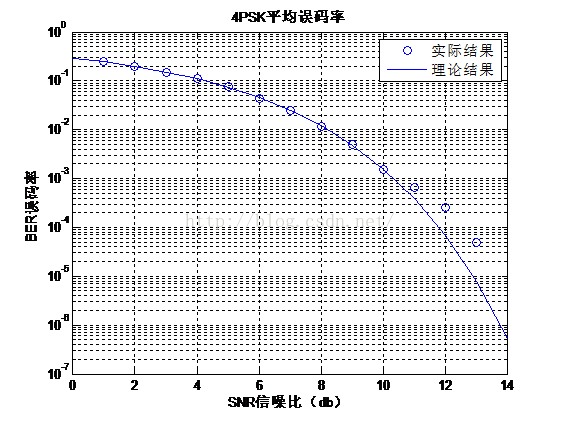- 异步处理方式之信号(一):基础知识和signal函数说明
叨陪鲤
Linux高级网络编程openswan源码分析Linux上的信号异步信号处理signalsigaction
文章目录1.引言2.信号的概念2.1信号操作之忽略信号2.2信号操作之捕捉信号2.3信号操作之执行系统默认操作2.4常见的信号3.函数signal3.1signal函数介绍3.2signal函数示例3.3signal函数的限制1.引言信号是一种软中断。很多比较重要的应用程序都需要处理信号。信号提供了一种异步处理事件的方法,例如:终端用户输入中断键,会通过信号机制终止一个程序等。早期的信号存在丢失的
- 06 - gldas水文模型数据处理 - 下载、matlab读取
咋(za)说
论文笔记笔记经验分享
gldas水文模型数据处理-下载、matlab读取0.引言1.GLDAS水文数据介绍2.GLDAS数据下载3.GLDAS数据读取的matlab程序0.引言 根据水量平衡方程,陆地水储量变化(Δtws\DeltatwsΔtws
- matlab spmd,matlab并行计算命令
其实我是老莫
matlabspmd
1.matlab仿真模型怎么并行计算以单台双核计算机为例。首先打开MATLAB命令窗口,输入matlabpoolopen就OK了。这样,就相当于将一台计算机的两个核心,当做两台机器用啦。接下来是编程序实现的方法。MATLAB并行计算的模式有几种?主要是两种:parfor模式和spmd模式。两种模式的应用都很简单。第一个中,parfor其实就是parallel+for简化而来,顾名思义啊,就是把原来
- RabbitMQ报错:Shutdown Signal channel error; protocol method
m0_74825093
面试学习路线阿里巴巴rabbitmq分布式
报错信息:ShutdownSignal:channelerror;protocolmethod:#method(reply-code=406,reply-text=PRECONDITION_FAILED-unknowndeliverytag1,class-id=60,method-id=80)原因默认情况下RabbitMQ是自动ACK(确认签收)机制,就意味着MQ会在消息发送完毕后,自动帮我们去A
- 【漫话机器学习系列】130.主成分(Principal Components)
IT古董
漫话机器学习系列专辑机器学习人工智能python
主成分(PrincipalComponents)详解1.什么是主成分?主成分(PrincipalComponents,PCs)是数据集中方差最大的线性组合,它是主成分分析(PrincipalComponentAnalysis,PCA)中的核心概念。主成分可以看作是对原始特征的新表述方式,它通过数学变换找到一组新的正交坐标轴,使得数据的主要变化方向与这些轴对齐。简单来说:主成分是数据集中信息量(方差
- 基于双向长短期记忆神经网络结合多头注意力机制(BiLSTM-Multihead-Attention)的单变量时序预测
机器学习和优化算法
多头注意力机制深度学习神经网络人工智能机器学习单变量时序预测BiLSTM多头注意力机制
目录1、代码简介2、代码运行结果展示3、代码获取1、代码简介基于双向长短期记忆神经网络结合多头注意力机制(BiLSTM-Multihead-Attention)的单变量时序预测(单输入单输出)1.程序已经调试好,无需更改代码替换数据集即可运行!!!数据格式为excel!2.需要其他算法的都可以定制!注:1️⃣、运行环境要求MATLAB版本为2023b及其以上。【没有我赠送】2️⃣、评价指标包括:R
- 【2020蓝桥杯省赛“蛇形填数“python实现】纯暴力规律求解
自由之翼explore
蓝桥杯python职场和发展算法
原题如下在网上找的python解答都让我云里雾里的,无奈自己太笨,于是乎开始寻找这个问题的简单规律,最后倒确实找到了:(我先用MatLab生成了一个蛇形矩阵,这段代码是在CSDN上找的)%Zigzagscanningn=8;a=zeros(n);%初始化a(1,1)=1;i=1;%行j=1;%列f=0;%标志位1表示行增加列减小k=2;%循环赋值从左上角开始循环while(kn^2)break;e
- 用MATLAB打造浪漫3D粒子心脏:代码解析与动态可视
爱玩三国杀的界徐盛
matlab3d开发语言
一、效果预览本文我们将用MATLAB实现一个令人惊艳的3D动态可视化效果:旋转的粒子心脏悬浮在星空背景中,粉紫色的心形粒子群与不同层次的旋转星辰交相辉映。这个效果结合了三维曲面生成、粒子系统、坐标变换等多项技术,最终呈现出一个充满科技感的动态艺术作品。二、代码解析2.1颜色配置模块col=@(n)repmat([255,158,196]./255,[n,1])+repmat([-39,-81,-5
- MMDetection实用工具详解(上):日志分析、结果分析、混淆矩阵
MickeyCV
目标检测python深度学习linux目标检测
实用工具目录一、日志分析使用方法实际案例二、结果分析pkl结果文件生成使用方法实际案例三、混淆矩阵使用方法实际案例遇到的UserWarning解决方案MMDetection官方除了训练和测试脚本,他们还在mmdetection/tools/目录下提供了许多有用的工具。本帖先为大家重点介绍其中三个简单而实用的工具:日志分析、结果分析、混淆矩阵。一、日志分析tools/analysis_tools/a
- 基于支持向量数据描述 (SVDD) 进行多类分类(Matlab代码实现)
荔枝科研社
分类matlab人工智能
个人主页:研学社的博客欢迎来到本博客❤️❤️博主优势:博客内容尽量做到思维缜密,逻辑清晰,为了方便读者。⛳️座右铭:行百里者,半于九十。本文目录如下:目录1概述一、引言二、SVDD算法原理三、基于SVDD的多类分类方法四、讨论与展望五、结论2运行结果3参考文献4Matlab代码实现1概述使用支持向量数据描述(SVDD)进行多类分类。矩阵代码。基于SVDD的多类分类在此MATLAB脚本中呈现。多类
- 拉格朗日插值多项式(Lagrange Interpolation)原理 + Python 代码
Illusionna.
python
原理部分见:拉格朗日插值—Homev1.2023.11文档https://illusionna.readthedocs.io/zh/latest/projects/Mathematics/Numerical%20Analysis/%E6%8B%89%E6%A0%BC%E6%9C%97%E6%97%A5%E6%8F%92%E5%80%BC/Lagrange.html代码依赖第三方库:1.numpy2
- 基于信息间隙决策理论的碳捕集电厂调度(Matlab代码实现)
砌墙_2301
matlab算法人工智能
个人主页欢迎来到本博客❤️❤️博主优势:博客内容尽量做到思维缜密,逻辑清晰,为了方便读者。⛳️座右铭:行百里者,半于九十。本文目录如下:目录1概述基于信息间隙决策理论(IGDT)的碳捕集电厂调度研究综述一、信息间隙决策理论(IGDT)的定义与核心原理二、碳捕集电厂调度的主要研究方向与挑战三、IGDT在碳捕集电厂调度中的模型框架四、现有调度方法的局限性及IGDT的改进五、实证研究案例分析六、总结与
- 基于BMO磁性细菌优化的WSN网络最优节点部署算法matlab仿真
软件算法开发
MATLAB程序开发#网络仿真matlabBMO磁性细菌优化WSN网络最优节点部署
目录1.程序功能描述2.测试软件版本以及运行结果展示3.核心程序4.本算法原理5.完整程序1.程序功能描述无线传感器网络(WirelessSensorNetwork,WSN)由大量分布式传感器节点组成,用于监测物理或环境状况。节点部署是WSN的关键问题,合理的部署可以提高网络的覆盖范围、连通性和能量效率。磁性细菌是一类能够感知地球磁场并沿磁场方向游动的微生物。在BMO算法中,模拟磁性细菌的这种趋磁
- MATLAB控制函数测试要点剖析
蚂蚁质量
其他matlab深度学习
一、功能准确性检验基础功能核验针对常用控制函数,像用于传递函数建模的tf、构建状态空间模型的ss,以及开展阶跃响应分析的step等,必须确认其能精准执行基础操作。以tf函数为例,在输入分子与分母系数后,理应生成准确无误的传递函数模型;而运用step函数时,则应能够精准计算并绘制出系统的阶跃响应曲线,如实反映系统对阶跃输入的动态响应过程。复杂功能测试对于高级控制函数,例如线性二次调节器lqr、模型预
- 在MATLAB环境中,对矩阵拼接(Matrix Concatenation)的测试
蚂蚁质量
软件测试matlab矩阵
在MATLAB环境中,对矩阵拼接(MatrixConcatenation)的正确性与鲁棒性开展测试时,需要依据不同的拼接场景精心设计测试用例,全面验证矩阵维度、数据顺序、边界条件以及异常处理等关键方面。以下是详尽的测试方法与具体示例:基础功能测试(1)水平拼接([A,B]或horzcat)测试目的:确认在列方向进行拼接后,所得矩阵的尺寸是否准确无误,以及数据排列顺序是否符合预期。测试代码:matl
- PyQt组件间的通信方式
cclsdxs
pythonpyqtpyqt
PyQt组件间的通信方式PyQt组件间的通信方式1.组件介绍1.1组件的定义1.2组件的分类2.组件的通信方式2.1信号与槽(Signal&Slot)1.组件介绍在Qt框架中,组件(Component)是构建图形用户界面(GUI)的核心元素1.1组件的定义Qt组件(又称控件或部件)指用户界面中所有可视化的交互元素,例如按钮、文本框、标签、窗口等12。这些组件通过继承QWidget类实
- Failed to configure a DataSource: ‘url‘ attribute is not specified and no embedded datasource could
clownAdam
JavaJavaspringboot
问题:SpringBoot启动类时报错信息如下:ErrorstartingApplicationContext.Todisplaytheconditionsreportre-runyourapplicationwith'debug'enabled.2025-03-1000:52:29.412ERROR36776---[main]o.s.b.d.LoggingFailureAnalysisRepor
- 使用MATLAB保存视频每一帧的图像
水深00安东尼
Matlabmatlab音视频开发语言
clear;clc;%chooseavideofile[filename,pathname]=uigetfile('*.mp4','chooseavideofile','video.mp4','Multiselect','off');%选择名称为video.mp4的视频获取文件名称和存储路径fprintf('filename=%s\npathname=%s\n\n',filename,pathna
- 【自然语言处理-NLP】情感分析与主题建模
云博士的AI课堂
深度学习哈佛博后带你玩转机器学习自然语言处理人工智能情感分析主题建模深度学习机器学习NLP
以下内容详细剖析了NLP中情感分析(SentimentAnalysis)和主题建模(TopicModeling)的技术与方法,分别展示如何从文本中提取情感倾向和潜在主题,并提供示例代码和讲解,可在Python环境下直接运行。目录情感分析(SentimentAnalysis)1.1概念与方法概览1.2传统机器学习方法1.3深度学习与预训练模型1.4代码示例:基于机器学习的情感分类主题建模(Topic
- LAMMPS非平衡分子动力学:纳米线热导率计算教程
uote_e
算法数据库matlab
LAMMPS非平衡分子动力学:纳米线热导率计算教程概述本教程旨在介绍如何使用LAMMPS(Large-scaleAtomic/MolecularMassivelyParallelSimulator)软件进行非平衡分子动力学模拟,计算纳米线的热导率。我们将使用Matlab编写一个代码循环,以计算不同温度和尺寸下的热导率。引言纳米线的热导率是研究纳米尺度热传导行为中的重要参数。通过模拟和计算,我们可以
- LAMMPS非平衡分子动力学:纳米线热导率计算与Matlab代码
悠悠烟雨
matlab开发语言Matlab
LAMMPS非平衡分子动力学:纳米线热导率计算与Matlab代码在这篇文章中,我们将介绍如何使用LAMMPS(Large-scaleAtomic/MolecularMassivelyParallelSimulator)软件进行非平衡分子动力学模拟,以计算纳米线的热导率。同时,我们将提供相应的Matlab代码,以便循环计算不同温度和尺寸的纳米线热导率。LAMMPS是一种常用的分子动力学模拟软件,广泛
- LAMMPS体系轨迹分析系列:MATLAB计算温度
独行侠影
matlab开发语言
LAMMPS体系轨迹分析系列:MATLAB计算温度在分子动力学模拟中,LAMMPS是一个常用的开源软件包,可以用于模拟原子、分子以及其他粒子的动力学行为。对于通过LAMMPS模拟得到的轨迹数据,我们经常需要进行一些分析来了解体系的性质。本文将介绍如何使用MATLAB计算LAMMPS体系的温度,并提供相应的源代码。LAMMPS轨迹数据的读取首先,我们需要将LAMMPS生成的轨迹数据导入到MATLAB
- matlab 设置网格线为虚线
phymat.nico
数理方法
gridon;set(gca,'GridLineStyle',':','GridColor','k','GridAlpha',1);https://blog.csdn.net/cursethegod/article/details/80359738
- 【无人机三维路径规划】基于粒子群算法无人机山地三维路径规划含Matlab源码
天天Matlab科研工作室
Matlab各类代码matlab
1简介1无人机路径规划环境建模本文研究在已知环境下的无人机的全局路径规划,建立模拟城市环境的三维高程数字地图模型。考虑无人机飞行安全裕度后用圆柱体模拟建筑物,用半球体模拟其他树木等障碍及禁飞区,其三维高程数学模型表示为[10,10]:2适应度函数在采用粒子群算法进行路径规划时,适应度函数用以评价生成路径的优劣程度,也是算法种群迭代进化的依据,适应度函数的优劣决定着算法执行的效率与质量。为了更好地进
- MATLAB 坐标轴以及plot的使用与相关设置
持~月
matlab
使用matlab的绘图函数plot绘图时系统默认设置了一些属性,例如坐标轴字号大小等并根据情况自动设置坐标轴显示的上下限,这些属性可以通过函数灵活改动。1.设置坐标轴labelx=1:100;y=x;xlabel('时间(s)','FontSize',16);ylabel('压力(pa)','FontSize',16);gridon;%开启网格holdon;%保留绘图title('y=x','Fo
- Android AudioFlinger(二)——AndroidAudio Flinger的启动流程
Hirezy
AndroidFramework图形图像与音视频androidjava
一、启动audioflinger是整个Android音频系统的核心,起到了承上启下的作用,承上就是为上层应用提供了各种访问和管理的接口,启下就是通过HAL来管理各种音频设备。首先我们来看AudioFlinger是如何启动的。intmain(intargc__unused,char**argv){......signal(SIGPIPE,SIG_IGN);......spproc(ProcessSt
- 定位方法与程序讲解(专栏目录,更新中···)
MATLAB卡尔曼
MATLAB定位程序与详解matlab定位定位原理定位与导航
文章目录MATLAB定位程序与详解专栏定位技术的分类1.GPS类2.INS类/累计计算类3.TDOA4.TOA5AOA6.RSSI7.指纹8.视觉匹配定位方法的应用1.全球定位系统(GPS)2.地面基站定位3.蓝牙定位4.RFID定位5.惯性导航系统(INS)6.超宽带(UWB)定位7.无线局域网(WLAN)定位8.视觉定位9.声波定位组合导航初步MATLAB定位程序与详解专栏链接如下:https
- 【扩频通信】基于matlab m序列和gold序列扩频通信【含Matlab源码 4011期】
海神之光
matlab
欢迎来到海神之光博客之家✅博主简介:热爱科研的Matlab仿真开发者,修心和技术同步精进;个人主页:海神之光代码获取方式:海神之光Matlab王者学习之路—代码获取方式(1)完整代码,已上传资源;需要的,在博主主页搜期号直接付费下载或者订阅本专栏赠送此代
- 【扩频通信】 QPSK和DSSS扩频通信(先扩频 后调制 误码率对比)【含Matlab源码 4549期】
Matlab仿真科研站
matlab
欢迎来到Matlab仿真科研站博客之家✅博主简介:热爱科研的Matlab仿真开发者,修心和技术同步精进,Matlab项目合作可私信。个人主页:Matlab仿真科研站博客之家代码获取方式:扫描文章底部QQ二维码⛳️座右铭:行百里者,半于九十;路漫漫其修远兮,吾将上下而求索。⛄更多Matlab信号处理(仿真科研站版)仿真内容点击Matlab信号处理(仿真科研站版)⛄一、扩频通信系统简介**扩频通信的基
- 【SWO三维路径规划】基于matlab蜘蛛蜂算法SWO复杂山地环境下无人机三维路径规划【含Matlab源码 3576期】
Matlab研究室
matlab
欢迎来到Matlab研究室博客之家✅博主简介:985研究生,热爱科研的Matlab仿真开发者,完整代码论文复现程序定制期刊写作科研合作扫描文章底部QQ二维码。个人主页:Matlab研究室代码获取方式:扫描文章底部QQ二维码⛳️座右铭:行百里者,半于九十;路漫漫其修远兮,吾将上下而求索。更多Matlab路径规划仿真内容点击①Matlab路径规划(研究室版
- java杨辉三角
3213213333332132
java基础
package com.algorithm;
/**
* @Description 杨辉三角
* @author FuJianyong
* 2015-1-22上午10:10:59
*/
public class YangHui {
public static void main(String[] args) {
//初始化二维数组长度
int[][] y
- 《大话重构》之大布局的辛酸历史
白糖_
重构
《大话重构》中提到“大布局你伤不起”,如果企图重构一个陈旧的大型系统是有非常大的风险,重构不是想象中那么简单。我目前所在公司正好对产品做了一次“大布局重构”,下面我就分享这个“大布局”项目经验给大家。
背景
公司专注于企业级管理产品软件,企业有大中小之分,在2000年初公司用JSP/Servlet开发了一套针对中
- 电驴链接在线视频播放源码
dubinwei
源码电驴播放器视频ed2k
本项目是个搜索电驴(ed2k)链接的应用,借助于磁力视频播放器(官网:
http://loveandroid.duapp.com/ 开放平台),可以实现在线播放视频,也可以用迅雷或者其他下载工具下载。
项目源码:
http://git.oschina.net/svo/Emule,动态更新。也可从附件中下载。
项目源码依赖于两个库项目,库项目一链接:
http://git.oschina.
- Javascript中函数的toString()方法
周凡杨
JavaScriptjstoStringfunctionobject
简述
The toString() method returns a string representing the source code of the function.
简译之,Javascript的toString()方法返回一个代表函数源代码的字符串。
句法
function.
- struts处理自定义异常
g21121
struts
很多时候我们会用到自定义异常来表示特定的错误情况,自定义异常比较简单,只要分清是运行时异常还是非运行时异常即可,运行时异常不需要捕获,继承自RuntimeException,是由容器自己抛出,例如空指针异常。
非运行时异常继承自Exception,在抛出后需要捕获,例如文件未找到异常。
此处我们用的是非运行时异常,首先定义一个异常LoginException:
/**
* 类描述:登录相
- Linux中find常见用法示例
510888780
linux
Linux中find常见用法示例
·find path -option [ -print ] [ -exec -ok command ] {} \;
find命令的参数;
- SpringMVC的各种参数绑定方式
Harry642
springMVC绑定表单
1. 基本数据类型(以int为例,其他类似):
Controller代码:
@RequestMapping("saysth.do")
public void test(int count) {
}
表单代码:
<form action="saysth.do" method="post&q
- Java 获取Oracle ROWID
aijuans
javaoracle
A ROWID is an identification tag unique for each row of an Oracle Database table. The ROWID can be thought of as a virtual column, containing the ID for each row.
The oracle.sql.ROWID class i
- java获取方法的参数名
antlove
javajdkparametermethodreflect
reflect.ClassInformationUtil.java
package reflect;
import javassist.ClassPool;
import javassist.CtClass;
import javassist.CtMethod;
import javassist.Modifier;
import javassist.bytecode.CodeAtt
- JAVA正则表达式匹配 查找 替换 提取操作
百合不是茶
java正则表达式替换提取查找
正则表达式的查找;主要是用到String类中的split();
String str;
str.split();方法中传入按照什么规则截取,返回一个String数组
常见的截取规则:
str.split("\\.")按照.来截取
str.
- Java中equals()与hashCode()方法详解
bijian1013
javasetequals()hashCode()
一.equals()方法详解
equals()方法在object类中定义如下:
public boolean equals(Object obj) {
return (this == obj);
}
很明显是对两个对象的地址值进行的比较(即比较引用是否相同)。但是我们知道,String 、Math、I
- 精通Oracle10编程SQL(4)使用SQL语句
bijian1013
oracle数据库plsql
--工资级别表
create table SALGRADE
(
GRADE NUMBER(10),
LOSAL NUMBER(10,2),
HISAL NUMBER(10,2)
)
insert into SALGRADE values(1,0,100);
insert into SALGRADE values(2,100,200);
inser
- 【Nginx二】Nginx作为静态文件HTTP服务器
bit1129
HTTP服务器
Nginx作为静态文件HTTP服务器
在本地系统中创建/data/www目录,存放html文件(包括index.html)
创建/data/images目录,存放imags图片
在主配置文件中添加http指令
http {
server {
listen 80;
server_name
- kafka获得最新partition offset
blackproof
kafkapartitionoffset最新
kafka获得partition下标,需要用到kafka的simpleconsumer
import java.util.ArrayList;
import java.util.Collections;
import java.util.Date;
import java.util.HashMap;
import java.util.List;
import java.
- centos 7安装docker两种方式
ronin47
第一种是采用yum 方式
yum install -y docker
- java-60-在O(1)时间删除链表结点
bylijinnan
java
public class DeleteNode_O1_Time {
/**
* Q 60 在O(1)时间删除链表结点
* 给定链表的头指针和一个结点指针(!!),在O(1)时间删除该结点
*
* Assume the list is:
* head->...->nodeToDelete->mNode->nNode->..
- nginx利用proxy_cache来缓存文件
cfyme
cache
user zhangy users;
worker_processes 10;
error_log /var/vlogs/nginx_error.log crit;
pid /var/vlogs/nginx.pid;
#Specifies the value for ma
- [JWFD开源工作流]JWFD嵌入式语法分析器负号的使用问题
comsci
嵌入式
假如我们需要用JWFD的语法分析模块定义一个带负号的方程式,直接在方程式之前添加负号是不正确的,而必须这样做:
string str01 = "a=3.14;b=2.71;c=0;c-((a*a)+(b*b))"
定义一个0整数c,然后用这个整数c去
- 如何集成支付宝官方文档
dai_lm
android
官方文档下载地址
https://b.alipay.com/order/productDetail.htm?productId=2012120700377310&tabId=4#ps-tabinfo-hash
集成的必要条件
1. 需要有自己的Server接收支付宝的消息
2. 需要先制作app,然后提交支付宝审核,通过后才能集成
调试的时候估计会真的扣款,请注意
- 应该在什么时候使用Hadoop
datamachine
hadoop
原帖地址:http://blog.chinaunix.net/uid-301743-id-3925358.html
存档,某些观点与我不谋而合,过度技术化不可取,且hadoop并非万能。
--------------------------------------------万能的分割线--------------------------------
有人问我,“你在大数据和Hado
- 在GridView中对于有外键的字段使用关联模型进行搜索和排序
dcj3sjt126com
yii
在GridView中使用关联模型进行搜索和排序
首先我们有两个模型它们直接有关联:
class Author extends CActiveRecord {
...
}
class Post extends CActiveRecord {
...
function relations() {
return array(
'
- 使用NSString 的格式化大全
dcj3sjt126com
Objective-C
格式定义The format specifiers supported by the NSString formatting methods and CFString formatting functions follow the IEEE printf specification; the specifiers are summarized in Table 1. Note that you c
- 使用activeX插件对象object滚动有重影
蕃薯耀
activeX插件滚动有重影
使用activeX插件对象object滚动有重影 <object style="width:0;" id="abc" classid="CLSID:D3E3970F-2927-9680-BBB4-5D0889909DF6" codebase="activex/OAX339.CAB#
- SpringMVC4零配置
hanqunfeng
springmvc4
基于Servlet3.0规范和SpringMVC4注解式配置方式,实现零xml配置,弄了个小demo,供交流讨论。
项目说明如下:
1.db.sql是项目中用到的表,数据库使用的是oracle11g
2.该项目使用mvn进行管理,私服为自搭建nexus,项目只用到一个第三方 jar,就是oracle的驱动;
3.默认项目为零配置启动,如果需要更改启动方式,请
- 《开源框架那点事儿16》:缓存相关代码的演变
j2eetop
开源框架
问题引入
上次我参与某个大型项目的优化工作,由于系统要求有比较高的TPS,因此就免不了要使用缓冲。
该项目中用的缓冲比较多,有MemCache,有Redis,有的还需要提供二级缓冲,也就是说应用服务器这层也可以设置一些缓冲。
当然去看相关实现代代码的时候,大致是下面的样子。
[java]
view plain
copy
print
?
public vo
- AngularJS浅析
kvhur
JavaScript
概念
AngularJS is a structural framework for dynamic web apps.
了解更多详情请见原文链接:http://www.gbtags.com/gb/share/5726.htm
Directive
扩展html,给html添加声明语句,以便实现自己的需求。对于页面中html元素以ng为前缀的属性名称,ng是angular的命名空间
- 架构师之jdk的bug排查(一)---------------split的点号陷阱
nannan408
split
1.前言.
jdk1.6的lang包的split方法是有bug的,它不能有效识别A.b.c这种类型,导致截取长度始终是0.而对于其他字符,则无此问题.不知道官方有没有修复这个bug.
2.代码
String[] paths = "object.object2.prop11".split("'");
System.ou
- 如何对10亿数据量级的mongoDB作高效的全表扫描
quentinXXZ
mongodb
本文链接:
http://quentinXXZ.iteye.com/blog/2149440
一、正常情况下,不应该有这种需求
首先,大家应该有个概念,标题中的这个问题,在大多情况下是一个伪命题,不应该被提出来。要知道,对于一般较大数据量的数据库,全表查询,这种操作一般情况下是不应该出现的,在做正常查询的时候,如果是范围查询,你至少应该要加上limit。
说一下,
- C语言算法之水仙花数
qiufeihu
c算法
/**
* 水仙花数
*/
#include <stdio.h>
#define N 10
int main()
{
int x,y,z;
for(x=1;x<=N;x++)
for(y=0;y<=N;y++)
for(z=0;z<=N;z++)
if(x*100+y*10+z == x*x*x
- JSP指令
wyzuomumu
jsp
jsp指令的一般语法格式: <%@ 指令名 属性 =”值 ” %>
常用的三种指令: page,include,taglib
page指令语法形式: <%@ page 属性 1=”值 1” 属性 2=”值 2”%>
include指令语法形式: <%@include file=”relative url”%> (jsp可以通过 include
